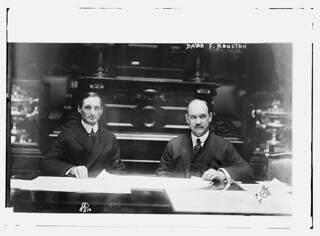 We avoid what we don’t know. For many financial, insurance and accounting professionals, they feel they ought to know estate planning better than they think they do. They also feel they should be assisting their clients in getting their estate’s in order but due to the professional’s discomfort with estate planning, put off discussing this need with their clients. This is completely understandable but also leaves the client with an unmet need.
We avoid what we don’t know. For many financial, insurance and accounting professionals, they feel they ought to know estate planning better than they think they do. They also feel they should be assisting their clients in getting their estate’s in order but due to the professional’s discomfort with estate planning, put off discussing this need with their clients. This is completely understandable but also leaves the client with an unmet need.
To be frank, most attorneys that do not practice in this area of law are intimidated by estate planning and these are men and women that learn this area of law in law school! I am not surprised that non-lawyers often feel the same way.
I don’t want to go into a big estate planning lesson here even though I hope through time this blog provides some education to these professionals. Instead, may I suggest various way to connect the client with an estate planning attorney.
Our office has three was of meeting the estate planning needs for the clients of the professional. All depending on the involvement the professional wants to be in the process.
The first way is direct involvement. Our office for example has an online procedure for creating an estate plan. The process walks the client through the questions, with simple explanations, followed by a recommendation from the law firm of the appropriate estate plan. The client will speak to an attorney, either on the phone or in person. The professional is facilitating the discussion but is protected from any suggestions that he or she is practicing law. This may be a good approach to some but most prefer the next option.
The second approach is a legal assistant that facilitates the entire process. The legal assistant meets with the client. The client can be at the professional’s office or at their home. The client will speak to an attorney during the process and a signing appointment for recommended estate planning documents is either handled at the professional’s office or at our office. With this approach the professional and client are assisted during the entire process.
The third approach is the traditional referral to a law firm.
As you can see, at no point in time is the professional put on the spot to fully explain estate planning. He or she merely facilitates the process and gets to choose his or her level of involvement. Most importantly, the client’s estate planning needs are met as a result of the professional’s service to their entire financial, estate and tax needs.
Kevin P. McFadden, Knollmiller & Arenofsky, LLP 480-345-0444




